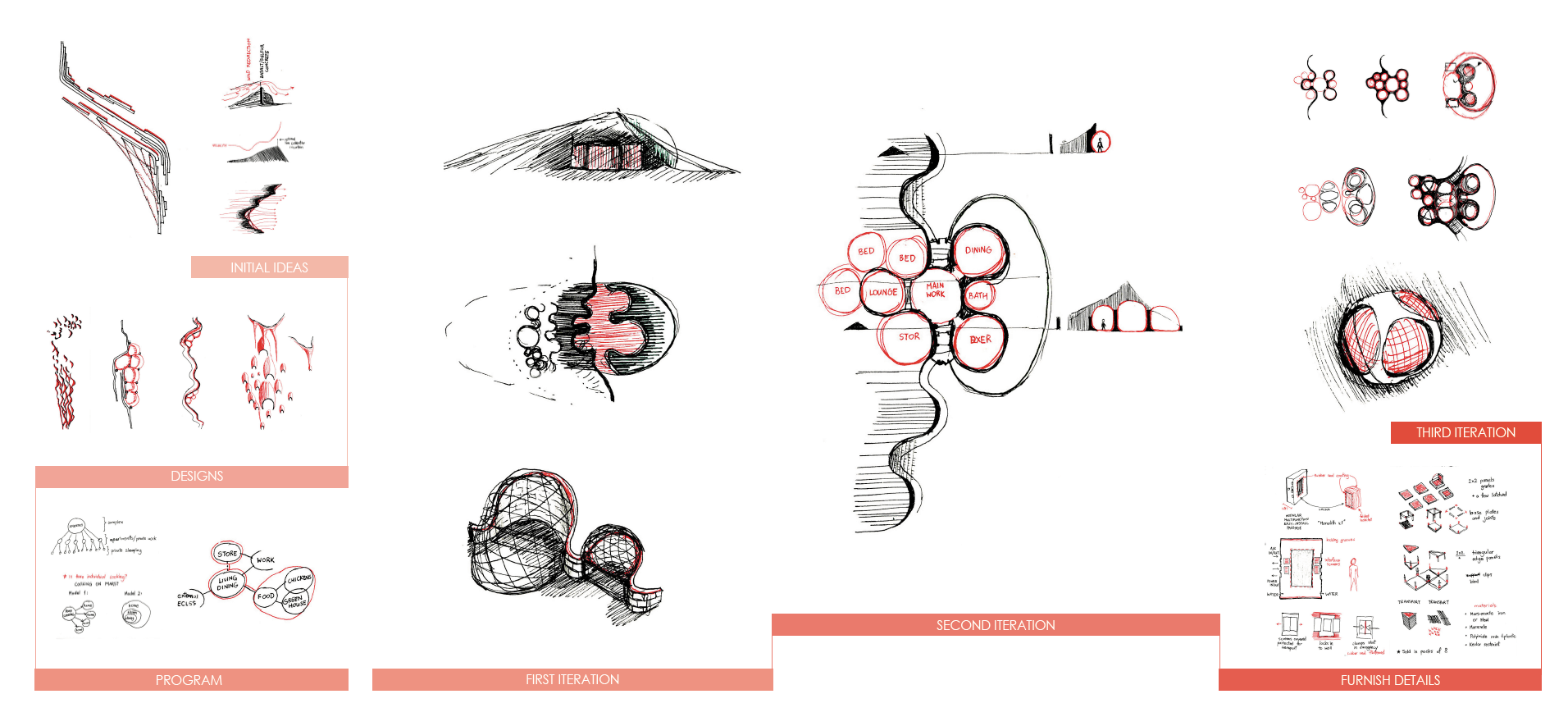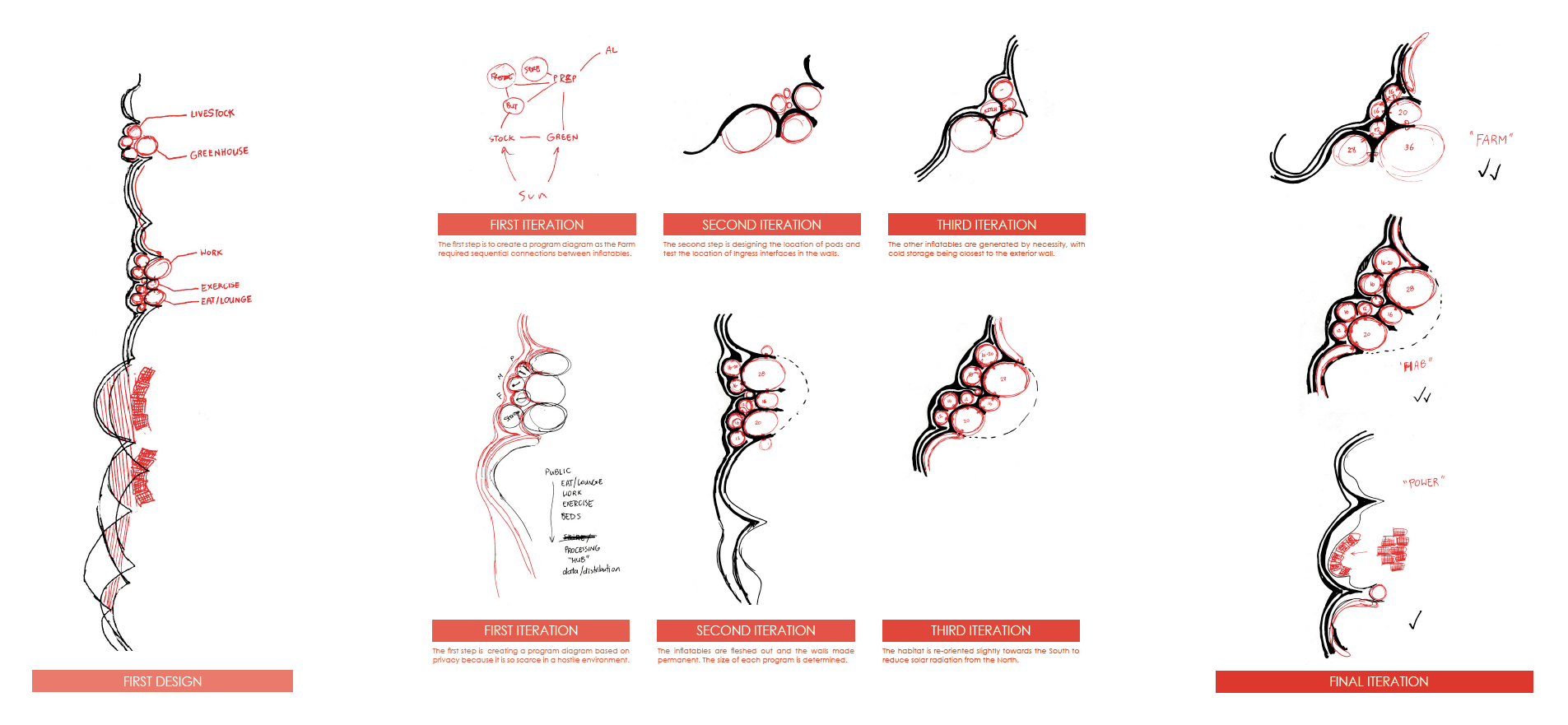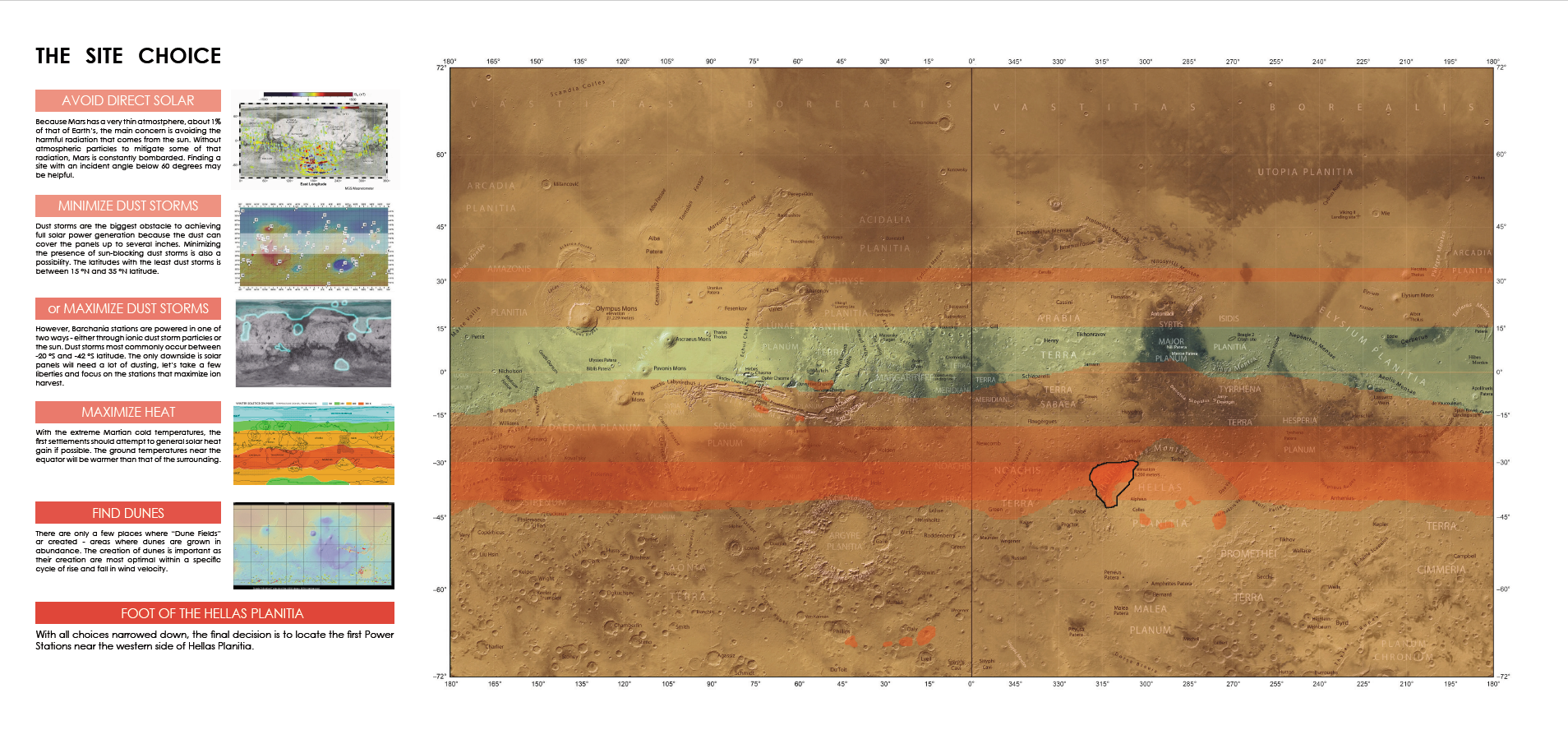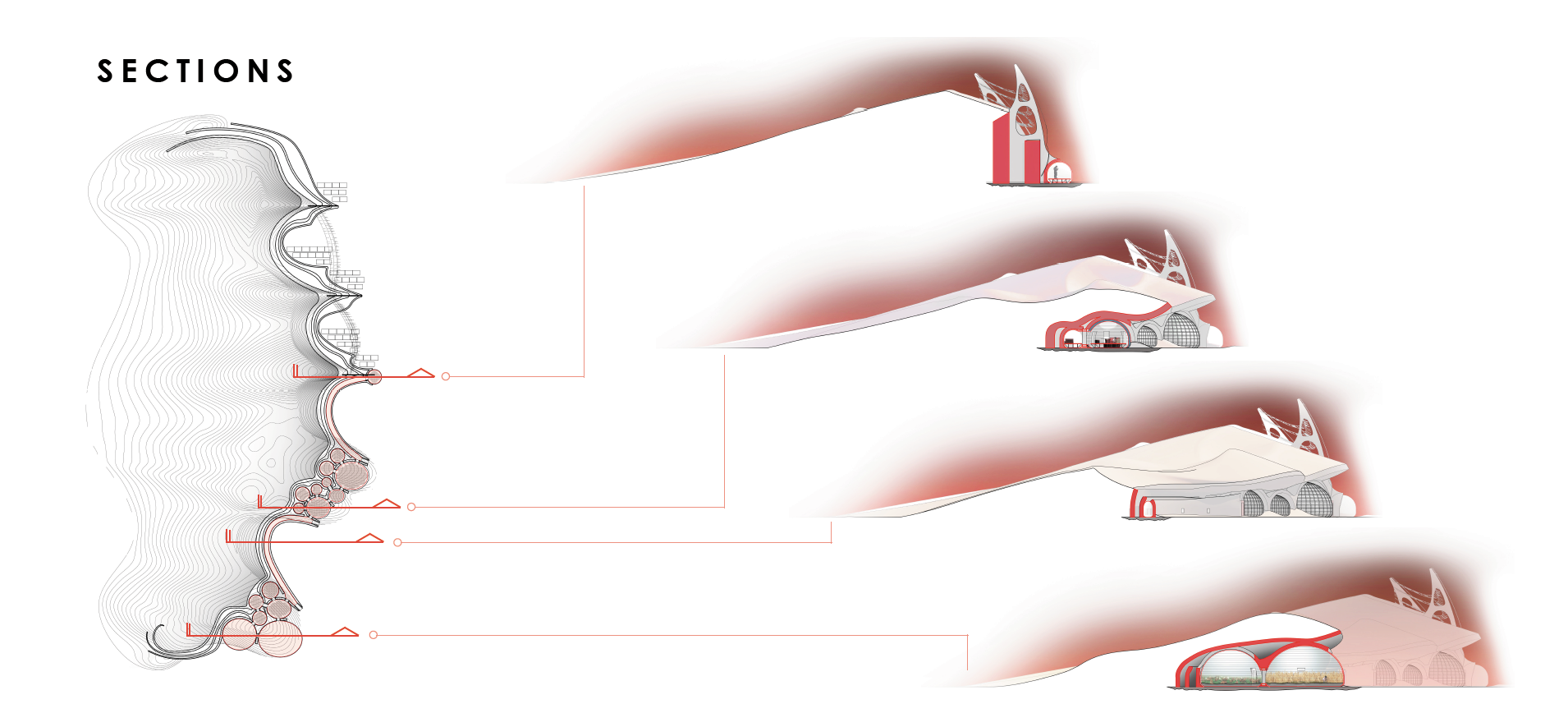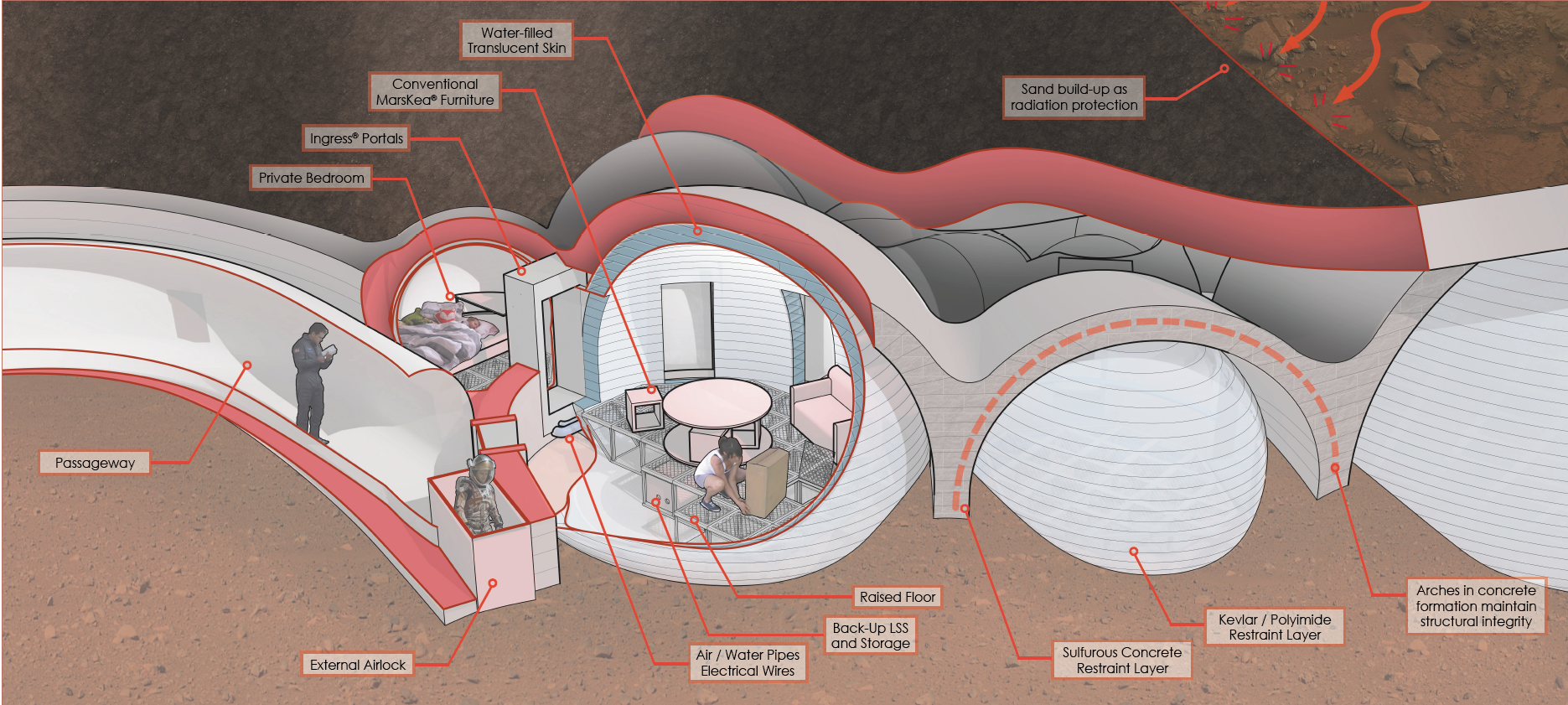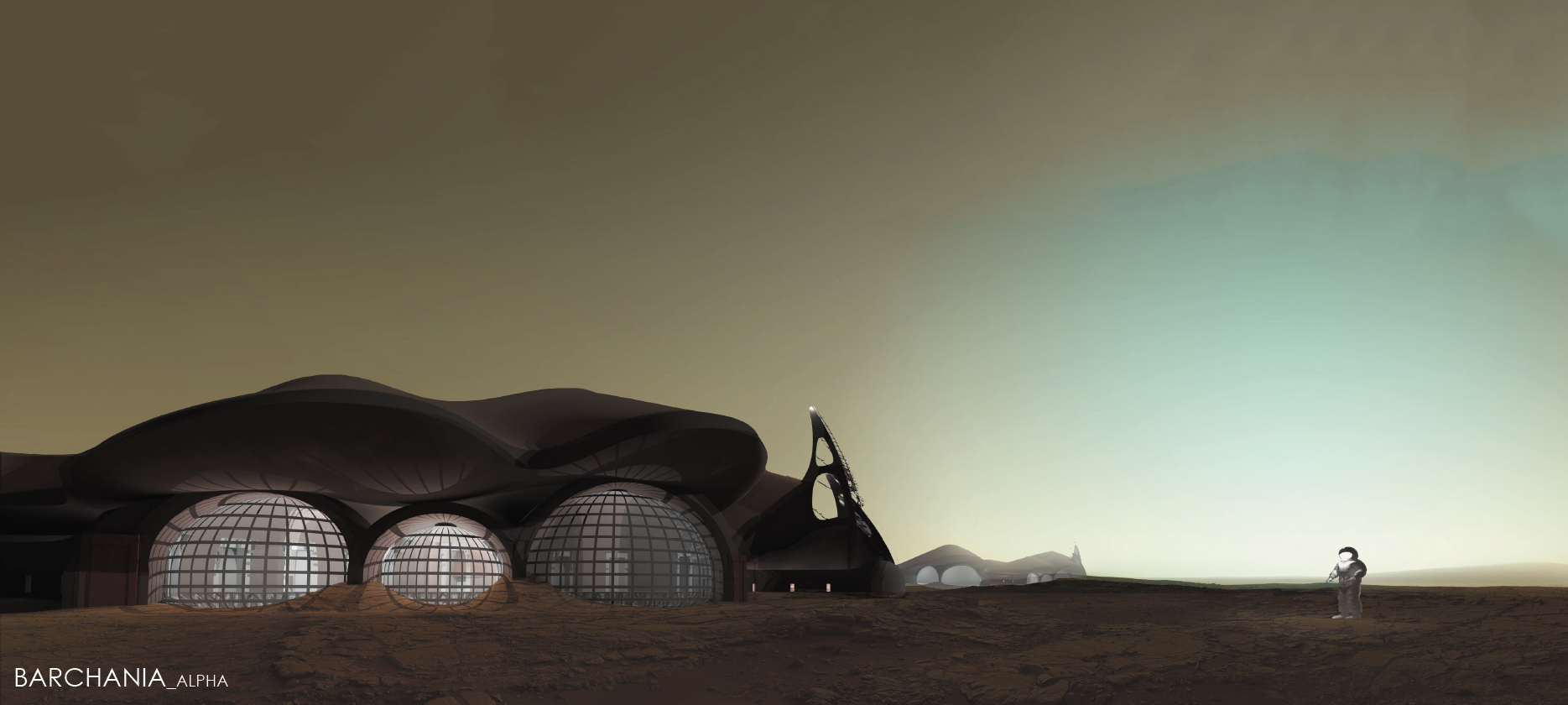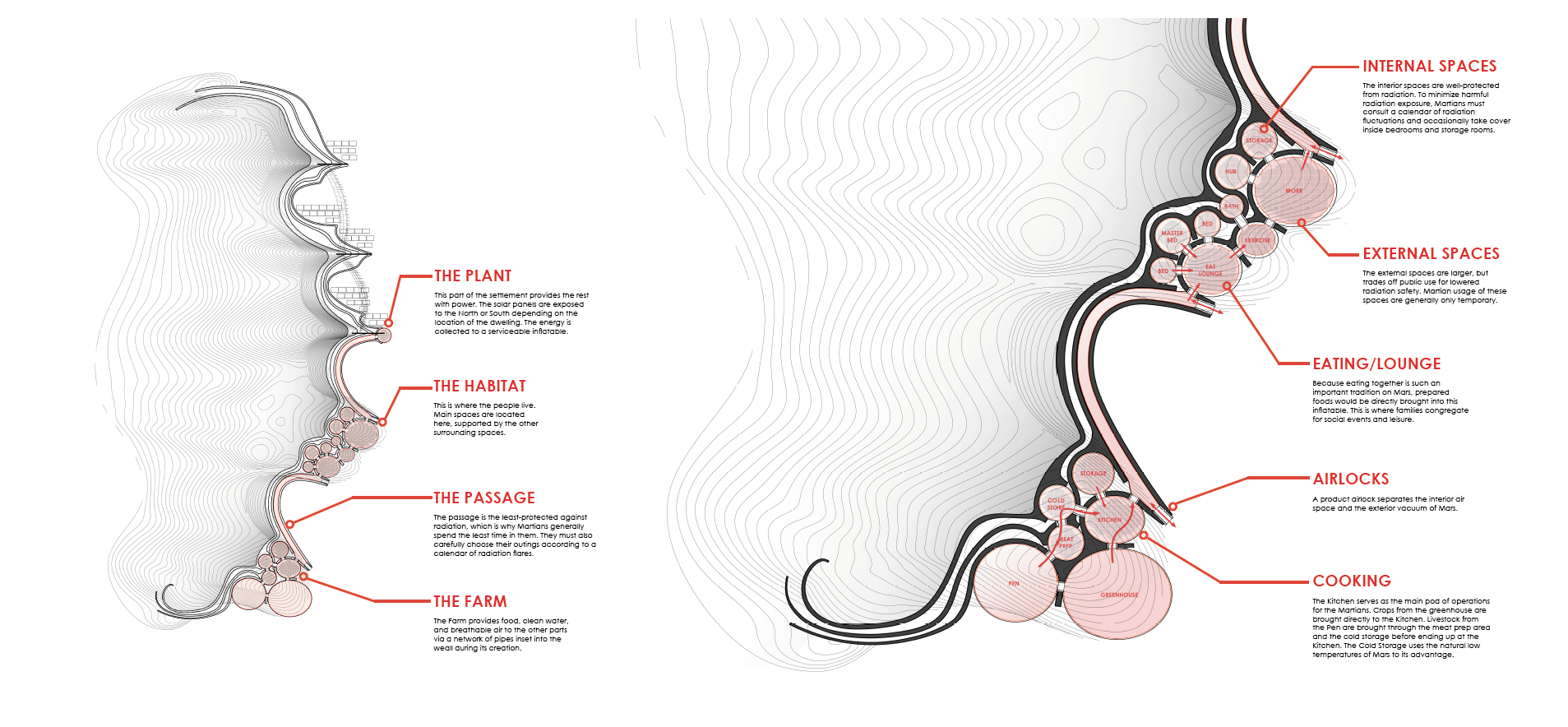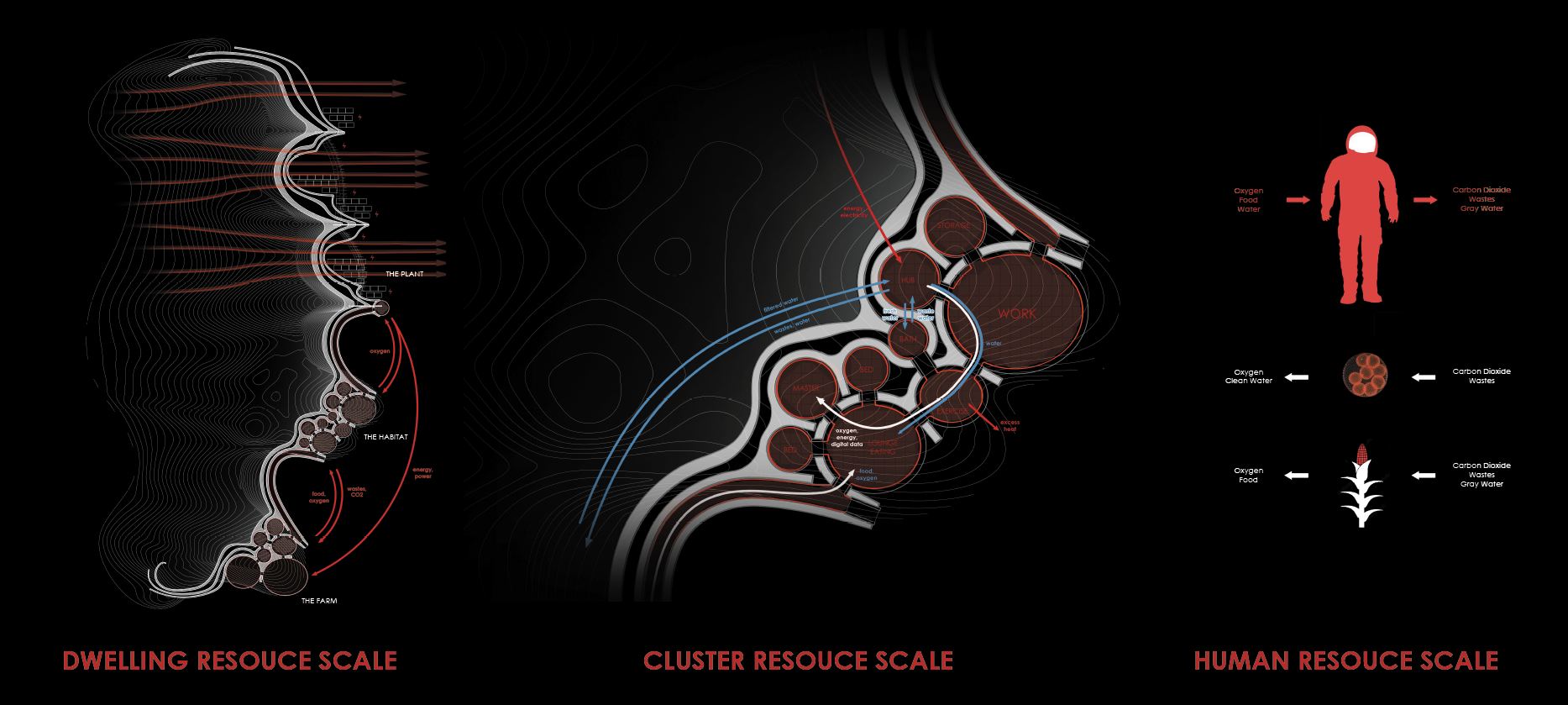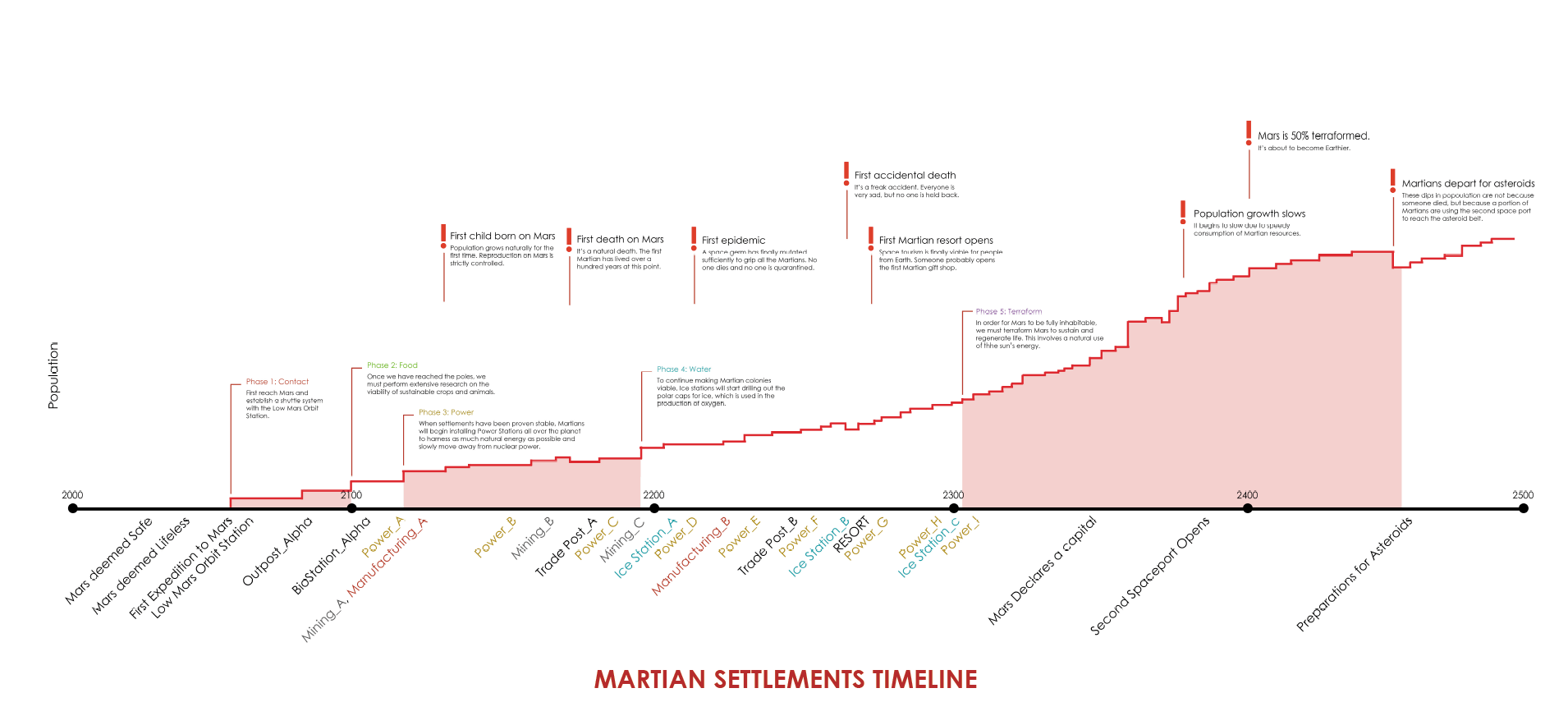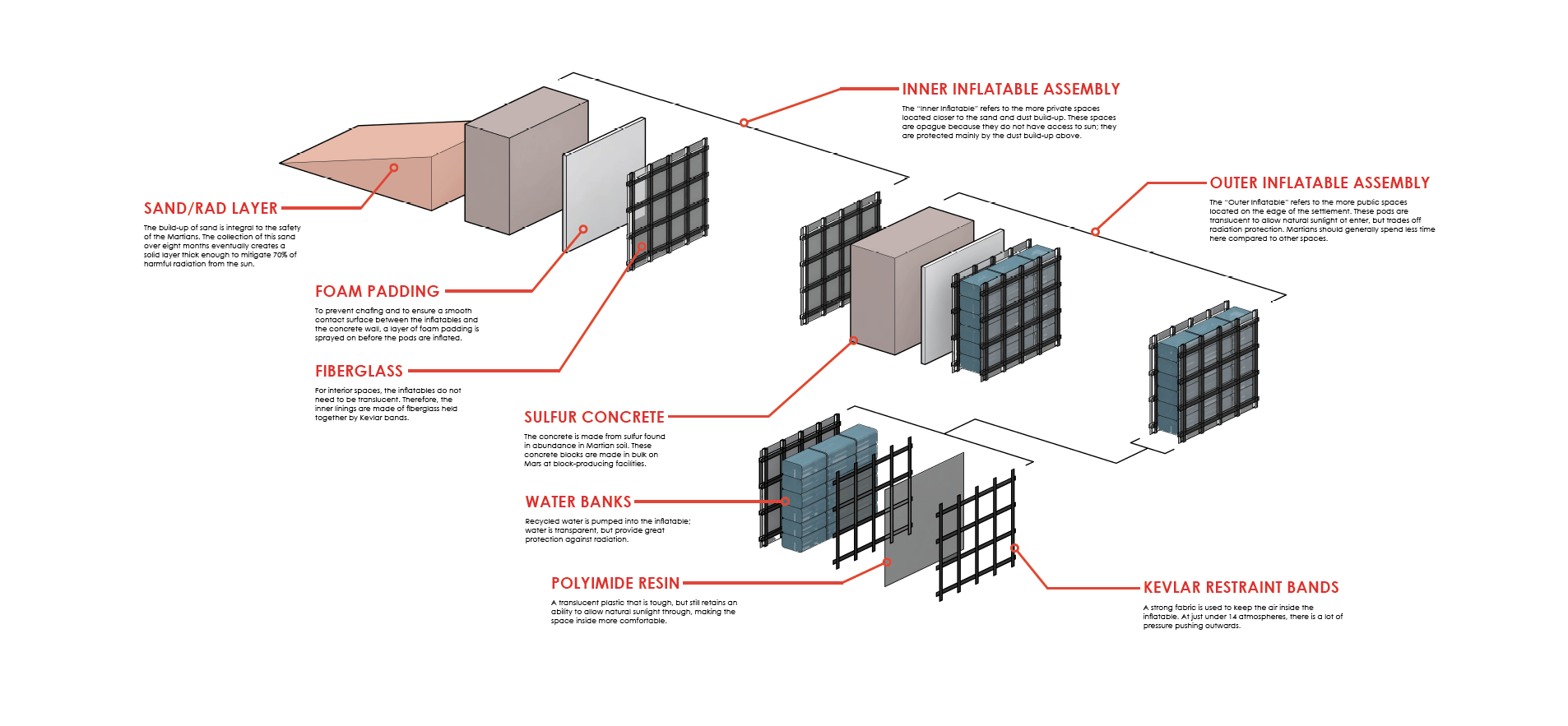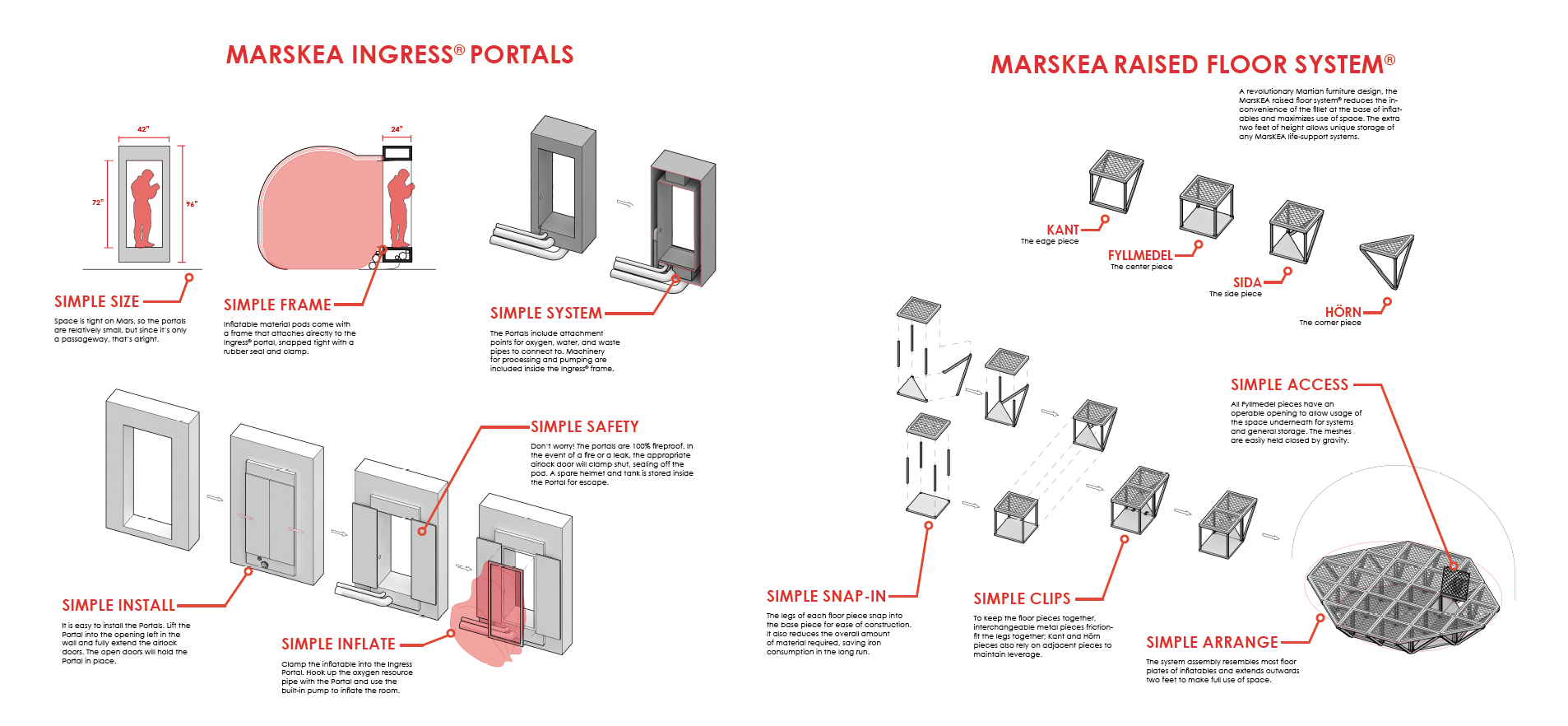I built a circular presentation of panels! It's like a representation of super VR.
Final Presentation! :DDD
I am so excited about my Final Presentation. It is a collection of an entire semester's worth of fantastic work, displayed in a surprisingly coherent fashion. I often doubt myself and my work, but I felt really great after my presentation's reception.
National Geographic
This is for National Geographic. I hope they like it.
THE SKETCH
MARS_CITY_WRITE
BARCHANIA_ALPHA is a Phase 1 settlement on Mars designed mainly to harvest power. As a part of the global resource network, Barchania_A provides excess battery-stored energy to other settlements. It also exports methane fuel as a part of its energy program.
The settlement, or station, is located on the Storm-Belt, one of two power-rich locations on Mars. The Sun-Belt maximizes pure solar energy input while the Storm-Belt combines ion energy-rich dust storms with the occasional solar exposure. Massive fields of solar panels turned to the sun will collect energy from the sun when dust storms do not blanket the sky. When there are storms, ion-collectors made of electrically-conductive graphene capture ions created by radiation bombardment.
The facility itself is generally constructed out of in-situ materials and is intended to be a low-tech, low-maintenance, and low-human involvement design. This limits the amount of trips humans would have to make to construct these structures. A major component is time; due to the relatively low-energy intake on Mars, construction would have to be spread out over periods of time. The first step is for the first Martians to set shaped concrete walls in a chosen location. As time passes, dust and regolith builds up on one side of the wall due to Mars’ west-east storm direction. In six months, humans would return and set up an inflatable in each of the wall portals; these would slowly fill up with air over time. In another two to three months, the second set of inflatables will be installed, which will house the organic-hybrid ECLSS. The humid vegetative air more effectively shields the inner spaces from solar radiation.
It is important that my design extends to the planetary scale because the global urban plan defines the purpose and location of these stations. Barchania is a good example of human-resource efficiency in terms of time and energy available: it is a slowly-growing settlement where the expansion method is chosen carefully to control resource management. This addresses the issue of limited Martian resources on Mars, which applies to city construction as well.
My design best fits under the infrastructure category. This idea developed over a long period of time, from various sources of inspiration. But once I saw the naturally-developing barchans on Mars, it all came together. The wind-funneling effects and beautiful shape complemented each other well. I was striving to create a parallel between the vernacular architecture system of Earth and that of Mars using what little formal features and conditions Mars had to offer. The result was an artificial barchan, which is quite a unique take on the Mars structure because of how important time is in its construction. Often, structures can be compressed into its materials in physical form, but the temporal aspect is new and interesting.
For locations on Earth where it is hostile to human life, it may be more beneficial to use naturally-generated living quarters to minimize the need for human presence. Construction robots can be used to make simple solids that can later be filled and occupied. The people who have inspired my designs are MAD Architects due to their use of form in a natural flowing manner in their Harbin Opera House.
The next assignment focused on form and space, thereby understanding the range of motion of astronauts who may live in space. The habitats are especially tall and layered for general radiation protection.
Resources in Space
The initial inspiration for the Dune Stations comes from the development of "Barchan Dunes" on Mars. Because the Power Stations are located in areas with high wind speed, the dunes are a perfect analogue for living. The only requirements are an in-situ wall and a packaged inflatable - the dust and regolith does the rest. The Stations are a part of an intra-planetary resource network, which is in turn part of an inter-planetary network with Earth.
If Bennu was a Potato
Don't judge me.
We created a diagram of the Energy Cycles in a closed-loop environment in space. Ideally, the Resupply Energy Source becomes further and further removed until loops in space can support themselves.
Bennu the Asteroid is one of 12 Solar System objects assigned to us for our analysis. In addition to analyzing its characteristics, size, and rotation, we also came up with various living organisms that could potentially live on the rock we analyzed.
Welcome to Space! You asked for a short, fun video - here is a really short, but really fun video.
By: Kwanpo Cheng
Christina Ciardullo, CMU SoArch, Spring 2016

